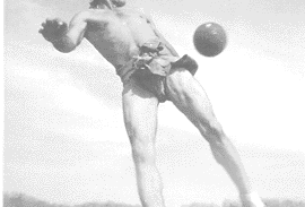In 1952, John Steinbeck won an Academy Award nomination for his screenplay of the movie, Viva Zapata! Many years later, however, a manuscript was found in UCLA Library in which it was discovered he had written extensively about his subject, other than simply the screenplay. It’s that document that makes up the major portion of this book.
It’s a strange narrative, obviously written with several audiences in mind but mainly – it seems to me at least – the director of the movie, Elia Kazan, as well as Steinbeck himself, as a way of putting his thoughts and ideas in order.
Steinbeck was obviously personally drawn to his subject, the Mexican revolutionary, Emiliano Zapata, 1877 – 1919. After all, he has no hesitation in stating that “Zapata has some things in common with Joan of Arc and Jesus Christ.” And in writing his script it seems to me, at least, that he wanted to make sure that Kazan and producer Daryl Zanuck were aware of the man they were making a film about and that they remained faithful to Steinbeck’s vision of him.
For instance, on page 48, Steinbeck states: “…Zapata was a greater man than his people. He belongs to the whole world, and his symbol of piracy and violence, and of resistance against oppression, is a world symbol.” And later: “While this story must be told on film with a simple, direct, almost childlike quality, it must also have a quality which indicates that it is a world story and a semi-mystical story, for its meaning is exact.” What a burden to lay on the poor director who has the task of actually making all this not only interesting and entertaining but profitable too.
Indeed, it should be added that Emiliano Zapata clearly saw himself as a larger than life figure. After all, here’s a man who said: “There have been men who, dying, have become stronger. I can think of many of them – Benito Juárez, Abraham Lincoln, Jesus Christ… Perhaps it might be that way with me.” As Steinbeck adds: he really said this, and mentioned those three names. So he might have been a peasant, but let’s not make the mistake of adding the word “humble”.
The end result is a lengthy, fascinating 200 page essay on Zapata, on Mexican history, on movie making, on the art of biography and on the difficulty of writing about a person and remaining true to the ‘truth’ of that person. Rounding out the book is the actual script of Viva Zapata! together with a couple of essays by Robert E. Morsberger on Zapata and on Steinbeck’s finished movie and the world’s reaction to it.
At the start of his narrative, Steinbeck eloquently describes life in a poor Mexican village. He goes on to describe a typical fiesta and one can immediately sense his concern about what will happen to his movie. After all, he is dealing with Hollywood. One can almost hear the mariachis tuning up for the big dance extravaganza in the village square complete with a chorus of broadly grinning peasants.
Steinbeck’s narrative is largely a series of sequences in which he explores an event or a facet of Mexican history or culture and then roughs out a scene, or a dramatization which may or may not make it into the actual movie but which sheds further light on his subject. Thus we see young Emiliano witnessing a murderous machete attack on his father by a rurale, his learning to ride, and the first time he steals guns and other weapons from the rurales. (The rurales were the ruthless ‘police’ – many of them former criminals – hired by the rich landowners to protect their property.)
Steinbeck is particularly good at describing the reasons for the revolution fought by Zapata and the way the hacendados, the fabulously rich landowners, in cahoots with the government, robbed the peasants of their land. The purpose of this outright theft was to turn the land over to sugar cane production, rather than the traditional corn, because sugar at that time brought high prices on world markets. The hacendados lived lives of incredible luxury, spending a great deal of time in European resorts and capitals. They were evidently devoid of pity for the people whose land they stole at the point of a gun, leaving the peasants homeless. A revolution was inevitable.
The author gives us a good account of the struggle in which Diaz was deposed – only to find that he was replaced, in true Mexican style, by another complete bastard, General Huerta, Zapata’s eventual assassin.
And so the narrative goes… It’s fascinating to see the actual process of taking a real life person and attempting to package him into a two hour entertainment. The packager simply can’t avoid distorting the portrait. And, in this case, the reader is always conscious that the left-leaning Steinbeck’s worshipful attitude is yet another factor in the process of distortion.
Verdict: For anyone interested in the art of biography, or in Mexican history, or in the craft of making movies, or in simply seeing the creative process at work, this is a highly enjoyable read.

Zapata
By John Steinbeck
Penguin paperback. 369 pp. 1993.
Available from Amazon Books: Paperback

